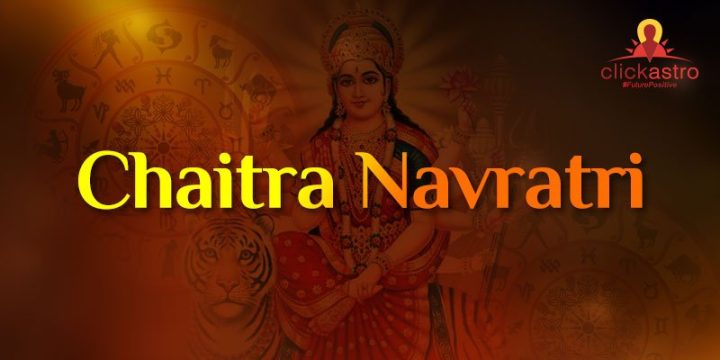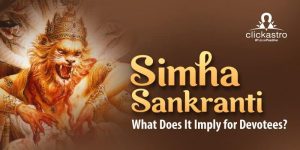Contents[hide]
Navaratri is an amalgamation of two words, where ‘Nav’ means Nine and ‘Ratri’ means Night. This is a celebration lasting nine nights and ten days. The festival signifies the victory of good over evil. Goddess Durga, the symbol of Shakti or ultimate strength, is worshipped during this occasion. Navratri is observed four times a year, at the onset of four seasons. Thus, there are Chaitra Navratri, Ashada Navratri, Sharad Navratri and Paush/Magha Navratri. Among these, the Chaitra Navratri in the Vasantaritu (season of spring) and the Sharad Navratri in the Sharadritu (season of autumn) are important and are celebrated with fervour. All these Navratri festivals are dedicated to Goddess Durga. The different manifestations of the Goddess are worshipped on these occasions. Theoretically, the nine forms of Durga are worshipped, namely Shailaputri, Brahmacharini, Chandraghanta, Kushmanda, Skandamata, Kaalratri, Katyayani, Mahagauri, and Siddhidhatri. The reasons for observing Navratri and its celebrations vary with various parts of the Indian cultural sphere.
Chaitra Navratri is the first Navratri festival in the Hindu calendar. Also, the Hindu New Year begins with Chaitra Navratri. This festival is observed from the Pratipada (the first lunar phase after the new moon) of Shukla Paksha (waxing phase) in Chaitra, the first month of the Hindu calendar. Chaitra Navratri is also known as the Vasanta Navratri, as it marks the beginning of the Vasantaritu or spring season. This is a grand nine-day festival dedicated to Goddess Durga. It is believed that worshipping the Mother Goddess during Chaitra Navratri can help them get salvation and seek her blessings. In the Gregorian calendar, this festival falls in March or April. Chaitra Navratri is more popular in North India, where it is celebrated with great enthusiasm. The new year festivals of various regional Indian calendars are celebrated under different names. Thus, Chaitra Navratri begins with the Gudi Padwa festival in Maharashtra and Goa, Ugadi in Andhra Pradesh, Telangana and Karnataka, and Navreh in Kashmir. For the Hindus in Indonesia, it is celebrated as Nyepi. Apart from these, Chaitra Navratri celebrations coincide with Ram Navami. Lord Ram, an incarnation of Lord Vishnu, was born on Navami (the ninth lunar day) in the Shukla Paksha of Chaitra month. So Ram Navami, the birthday of Lord Ram, usually falls on the ninth day of the Chaitra Navratri festival. For this reason, Chaitra Navratri is sometimes called Rama Navratri.
Chaitra Navratri, like all other Navratri festivals, signifies the victory of good over evil. The Hindus celebrate Chaitra Navratri by observing fasts and worshipping the nine forms of the Goddess Durga. Most of the customs and rituals followed during Sharad Navratri in September or October are also followed during Chaitra Navratri. The nine days of Chaitra Navratri are dedicated to the nine different forms of Goddess Shakti. The Ghatasthapana Puja Vidhi is the same as that of Sharad Navratri. The Shakta Hindu tradition recommends the recitation of Durga’s legends during the Chaitra Navaratri. Installing the Kalash and lighting a monolithic flame for nine days with a regular recitation of Durga Saptashati is still followed. The ninth day coincides with Ram Navami. So, the commemoration of Ram’s birth preceded by nine days of Ramayana recital can be seen in Vaishnava temples.
The Chaitra Navratri 2023 Dates and Chaitra Navratri Pujas are as follows.
- Day 1: 22 March 2023 (Wednesday), Pratipada- Ghatasthapana, Chandra Darshana Shailaputri Puja
- Day 2: 23 March 2023 (Thursday), Dwitiya- SindharaDooj, Brahmacharini Puja
- Day 3: 24 March 2023 (Friday), Tritiya- Gauri Puja, SaubhagyaTeejChandraghanta Puja
- Day 4: 25 March 2023 (Saturday) Chaturthi- Kushmanda Puja, Vinayaka Chaturthi
- Day 5: 26 March 2023 (Sunday), Panchami- Naag Puja, Lakshmi Panchami Skandamata Puja
- Day 6: 27 March 2023 (Monday), Sasthi- Skanda Sashti, Yamuna ChhathKatyayani Puja
- Day 7: 28 March 2023 (Tuesday), Saptami- Maha Saptami, Kalaratri Puja
- Day 8: 29 March 2023 (Wednesday), Asthami- Durga Ashtami, Mahagauri Puja Annapurna Ashtami, Sandhi Puja
- Day 9: 30 March 2023 (Thursday), Navami- Rama Navami
- Day 10: 31 March 2023 (Friday), Dashami- Navratri Parana
Kalash Sthapana Puja is an important ritual of Chaitra Navratri. People prefer to do this at their homes and workplace. There is a perfect way to install the Kalash on the first day of Navratri, as follows.
- On the day of installing Kalash, you should wake up early in the morning and take a shower.
- Cleaning the idols and the place to install Kalash is the next thing to do.
- Spread a red-coloured cloth on a wooden seat and put raw rice on it by chanting Lord Ganesh’s mantras.
- Make an altar with soil and sow barley seeds on it.
- Set the Kalash on the altar and pour water into it.
- Make a swastika sign on the Kalash with vermillion paste and tie a holy thread around its neck.
- Put betelnut and coin in the Kalash and place mango leaves around the mouth of the Kalash.
- Now, take a coconut, tie a holy thread and a red Chunari around it and place it on the top of Kalash, covering its mouth.
- Now, the Kalash is ready. You can offer flowers to the deities and worship with devotion.
- It is believed that the Kalash Sthapana Puja brings more health, wealth, and prosperity into your lives.









